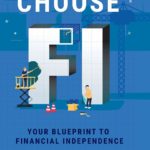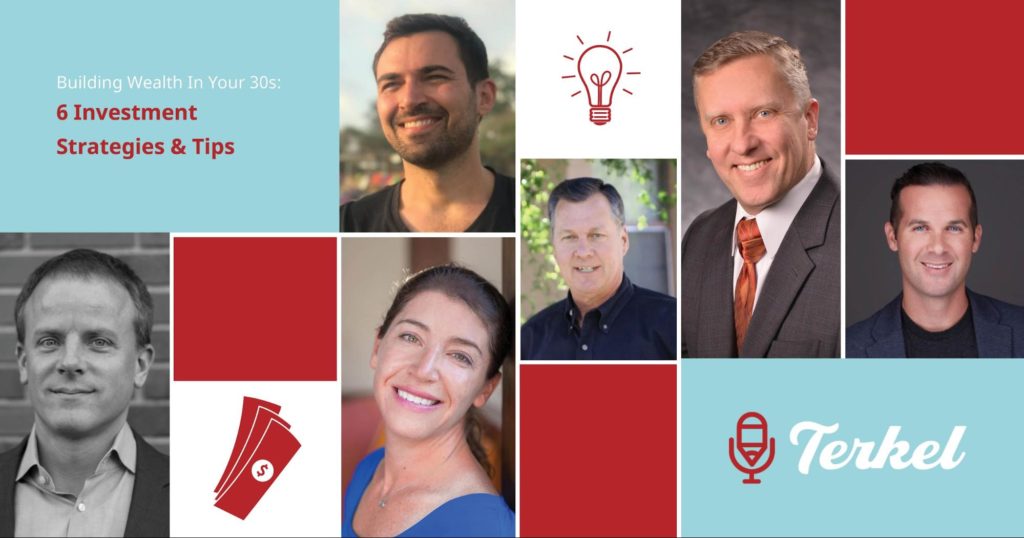 We all need to think about retirement planning at some point in our lives. Relying on rules of thumb like saving 10% of your income or withdrawing 4% of your savings can get you part way there. But it’s also important to think about what retirement will look like for you. When will you retire? How much will you spend? Do you want to leave an estate? Die broke?
We all need to think about retirement planning at some point in our lives. Relying on rules of thumb like saving 10% of your income or withdrawing 4% of your savings can get you part way there. But it’s also important to think about what retirement will look like for you. When will you retire? How much will you spend? Do you want to leave an estate? Die broke?
Here are some ideas to help you think about retirement planning, no matter what age and stage you’re at today.
Understand your Spending
Much of retirement planning is driven by your spending needs and so it’s crucial to have a good grasp of your monthly and annual spending – your true cost of living.
Of course, any plan that looks beyond one or two years is really more of a guess. What is your life going to look like in five, 10, or 20 years? How long are you going to live, and are you going to stay healthy throughout your lifetime?
We don’t know and so we use assumptions and rules of thumb to guide us. First, think of when you want to retire – is it the standard age of 65, or are you looking at retiring earlier or later? Then, it’s helpful to know that while life expectancy in Canada is around 82 years, there’s a significant chance that you’ll live much longer than that – so perhaps planning to live until age 90 or 95 would be more appropriate.
We’ve heard all types of rules of thumb on retirement spending, but the consensus seems to be that you’ll spend much less in retirement than you did during your final working years. You’re no longer saving for retirement, the mortgage is paid off, and kids have moved out.
In my experience, most people want to maintain their standard of living as they transition to retirement and so you might want to use your actual after-tax spending as a baseline for your retirement planning. Note, this does not include savings contributions or debt repayments, but your true cost of living that will carry with you from year to year.
Now you know your expected retirement date, your annual spending, and a life expectancy target: three key variables in developing your retirement plan.
How much do you need to save?
I remember using an online retirement calculator when I was younger and feeling depressed when it told me I needed to save thousands of dollars a month to reach my retirement goals.
The fact is, you do need to save for retirement and the best way to start is by setting up an automatic contribution to come out of your bank account every time you get paid. You’re establishing the habit of saving regularly rather than focusing on a “too-large-to-imagine” end result.
Treat retirement savings like paying a bill to your future self. You need to pay your bill every month or else “future you” won’t be happy.
There’s great research around automating contributions and also around increasing your contributions whenever you get a raise, bonus, or promotion. Remember, if you contribute 10% of your paycheque when you earn $60,000 per year but then get a raise to $70,000 per year, if you’re still saving $6,000 per year that’s now just 8.5% of your salary – not 10%.
Give “future you” a raise too.
It’s also important to remember that life doesn’t work in a straight line: we don’t just contribute a set amount and earn a consistent rate of return every single year. Our savings contributions could be put on hold for a period of time while we pay off debt, raise kids, or focus on other priorities. You could get a large bonus one year, but then no bonus for the next three years. Investment returns are also widely distributed and so instead of earning 6-7% per year you might get 12% one year, 5% another year, or lose 10% one year.
Don’t get discouraged if you don’t meet your savings targets one year because of some unforeseen expense. Life happens.
Forget about Age-based savings goals
Estimating retirement spending in your 20s or 30s is a pretty useless exercise. Again, we don’t know what our life will look like five, 10, 20 years down the road.
Here are the four areas that young people should focus on in their accumulation years:
- Understand how much you spend and where all of your money goes.
- Focus on spending less than you earn (or earning more than you spend).
- Establish both short- and long-term financial goals. It makes no sense to pour all of your extra cash flow into an RRSP, for example, if you plan on buying a car or getting married in 1-3 years.
- Set up automatic contributions into a long-term investing vehicle: a percentage of your paycheque that you can reasonably afford while still meeting all of your current expenses and short-term goals. This doesn’t have to be 10% but strive to increase the amount each year.
Many young investors want to know how they’re doing compared to their peers. I don’t think it’s useful to use any age-based savings goals as a benchmark or guideline. We all come out of the starting gate at different ages and with different circumstances.
Focus on being intentional with your money and establishing a savings habit early. Remember, this is about you and your retirement planning.
That said, once you get into the retirement readiness zone (say 3-5 years away from retirement) you should have a good grasp of your expenses and also the type of lifestyle you want to live in retirement. Your spending will drive your retirement planning and projections, so this is a critical piece to nail down.
Investing in Retirement
Investing has been solved in a sense that the best outcomes will come from staying invested in a risk appropriate, low-cost, broadly diversified portfolio of index funds or ETFs.
It’s never been easier to invest this way. Self-directed investors can open a discount brokerage account and buy a single asset allocation ETF. Hands-off investors can open a robo-advisor account. Even clients who choose to remain at their bank can insist on a portfolio of index funds.
That’s great in the accumulation stage, but what about investing in retirement? Besides potentially taking some risk off the table by changing your asset mix, not much needs to change.
Self-directed ETF investors can simply sell off units as needed to generate retirement income, or switch to an income producing ETF like Vanguard’s VRIF. Robo-advised clients can work with their portfolio manager on a retirement income withdrawal strategy.
The biggest difference might be a preference to hold a cash buffer of one-to-three years’ worth of spending (the gap between your guaranteed income sources like a workplace pension, CPP, and OAS, and your actual spending needs).
What about unplanned or one-time Expenses?
An emergency fund can be useful in retirement to pay for unplanned expenses. But, for routine maintenance and one-time expenses that come up every year, these should be built into your annual spending plan and budgeted for accordingly.
Your cash flows change in retirement as you move from getting one paycheque from your employer to receiving multiple sources of income, like from CPP and OAS (steady monthly income), maybe a workplace pension, and then topped-up by withdrawals from your personal savings. You may find that you need a large cash balance in the early stages of retirement while you adjust to your new reality.
Large expenses like a home renovation or new car should be planned for in advance and identified in your retirement plan so that appropriate funding is in place ahead of time.
Major unplanned expenses may require a change on the fly – and so using a home equity line of credit or dipping into your TFSA (tax free income) could help deal with these items in retirement. Many retirees quickly realize that their TFSA is an incredibly useful and flexible tool for both saving and spending.
Victory Lap Retirement?
Jonathan Chevreau and Mike Drak coined the phrase Victory Lap Retirement (read their book of the same name) with the idea that a full-stop retirement – in other words, going from 100% work mode to 100% leisure mode – was neither sustainable nor desirable. Continue Reading…





